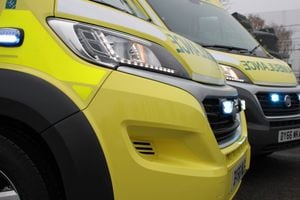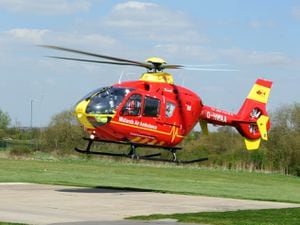Shropshire ambulances no longer always taking patients to nearest hospital
Changes to Shropshire's ambulance services mean patients are no longer taken to the hospital closest to where they fall ill.

West Midlands Ambulance Service (WMAS) is now operating a system where it can look at how busy hospitals are and can choose to take patients to a hospital where they can be seen more quickly.
Bosses say it depends on the patients' condition and will not affect those needing to go to major trauma centres in the region.
It is hoped it will reduce handover times and improve patient experience.
Jeremy Brown, from West Midlands Ambulance Service, said: "We are trying to improve the overall patient experience.
"We are trying to improve the number of patients that we don't need to convey to any emergency department to try and utilise some of those excellent services that are out there in our communities – the district nurses, the GP referrals, the out-of-hours services, to prevent that emergency department conveyance.
"We are trying to offer a service whereby we give the patients the best possible experience.
"Going to an emergency department where you can be waiting a long time outside, then to be seen, that whole experience can be quite frustrating.
"We are trying to balance things out a little bit, within reason, to transport those patients to where there is capacity and their overall experience will be improved."
Positive
He said WMAS has protocols in place that are specifically targeting patients who are mobile, not involved in ongoing care or treatment at any hospital and not over the age of 75, to minimise any impact.
The system has been running for several weeks and Mr Brown says it is improving all the time.
He said: "The feedback so far has been exceptionally positive which is really overwhelming.
"The crews feel this isn't questioning their clinical abilities but it's helping them."
About a third of patients arrive at Shropshire’s A&Es in ambulances.
It emerged in February that ambulances took 7,710 patients to the county’s emergency departments between December 3 and February 3.
One in 10 people – 718 in all – waited for more than an hour in ambulances, which included 37 patients in a single day when the backlog was at its most severe.
NHS bosses have stressed that A&Es should always accept handover of patients within 15 minutes of arrival by ambulance.
Hospital bosses said at the time that they were continuing to see a rise in demand for A&E services, but work was being done to improve performance.





